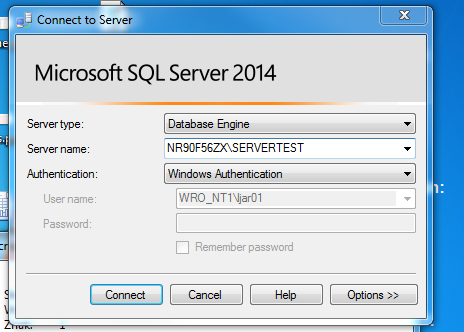Usually, when we run SQL scripts, it is done on an ad hoc basis. We usually run one file at a time just once. From time to time there is the need to run a set of SQL script files. One common reason I’ve seen for doing this is to rebuild a database for testing. If you had all of your create tables/stored procedure commands stored in a series of SQL script files, then you could rebuild your database fairly easily by executing the SQL files in sequence.
- Vbscript To Run .sql File L File In Psql
- Vbscript To Run .sql File Converter
- Vbscript To Run .sql File Processing
- Vbscript To Run .sql File Extension
- Vbscript To Run .sql File L File In Sqlplus Cmd
How to Run VBScript from SQL Server 2008. SQL developers can run vb script files from SQL Server t-sql codes by using xpcmdshell procedure. It is sometimes a requirement especially for web developers to call vb script from SQL Server engine and execute vbscript from sql code. Of course calling vbscript from sql can be solved by using CLR in. No, I don't think you can just specify a file and then execute the sql scripts inside the file. You must open your file and store its content in a string var and pass it in a ExecuteNonQuery. To make it simplier you can do this: command1.ExecuteNonQuery(File.OpenText('C: Test.sql').ReadToEnd); cheers, Paul June A. Using the command line we can run or execute any SQL scripts file with SQL Server Management Studio(SSMS) step to step Step 1: Please below my Example, copy the following code and and paste into the notepad it as save Product.sql file under the C:SQLScripts folder.
SQL Server provides a tool to do this called SQLCMD.
The sqlcmd utility lets you run entire SQL script files full of t-sql via command prompt. Leveraging this tool, you can create a batch file to run the sql script files in sequence.
How To Execute A SQL Script File Via Command Prompt With SQLCMD
Although there are TONS of command line options for executing a sql script. Just executing a sql script file with the basic options is very easy.
The above command uses the -i option to specify the input file of DropTables.sql. Everything inside this file will be execute on the current database.
NOTE: When you create your SQL script files, I always recommend putting a USE statement at the top of your script. This will ensure that you are using the correct database when your dropping and creating tables.
Vbscript To Run .sql File L File In Psql
Run A Batch Of SQL Script Files

Now that you know how to run one SQL script file… running multiple should be easy. All you need to do is create a batch file and run one script after the other.
Vbscript To Run .sql File Converter
Your batch file will look something like this:
2 4 | SQLCMD/i'c:scriptsCreateTables.sql' PAUSE |
What About Errors?
Vbscript To Run .sql File Processing
So what happens if the SQL script file throws an error? The above commands I showed you will just ignore any errors. If you want to capture your errors, you need to add the command line option /b. This flag will tell the sqlcmd utility to stop processing the script and output a DOS ERRORLEVEL value. You can then check the DOS ERRORLEVEL value after each execution.
Vbscript To Run .sql File Extension
2 4 6 8 | IF%ERRORLEVEL%>(PAUSE) SQLCMD/i'c:scriptsCreateTables.sql'/b IF%ERRORLEVEL%>0(PAUSE) |
Vbscript To Run .sql File L File In Sqlplus Cmd
Reference: http://msdn.microsoft.com/en-us/library/ms162773.aspx